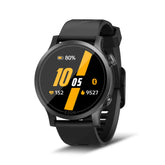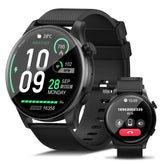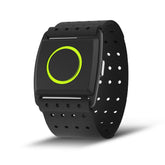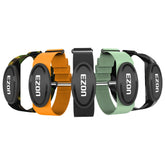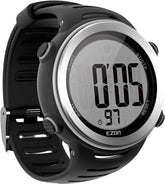Optimal Heart Rates for Diverse Fitness Routines: A Health Guide
Optimal Heart Rates for Diverse Fitness Routines: A Health Guide
Monitoring heart rate during exercise is a cornerstone of effective training, enabling you to optimize intensity, avoid overexertion, and achieve fitness goals safely. Whether you’re running, cycling, or lifting weights, understanding your target heart rate zones—and leveraging tools like the heart rate monitor watch or the best sports watch for workouts (e.g., EZON Watch)—can transform your routine. Below, we break down science-backed heart rate ranges for various activities and explain how modern wearables enhance precision.
Why Heart Rate Matters
Heart rate reflects how hard your cardiovascular system is working. Staying within optimal zones ensures:
Efficient calorie burn without overstressing the body.
Improved endurance through aerobic capacity development.
Reduced injury risk by avoiding excessive strain.
highlights that maintaining a heart rate of 120–140 bpm during moderate-intensity exercise aligns with the maximizing health benefits like fat oxidation and cardiovascular adaptation.
1. Running & Cycling (Aerobic Training)
Zone: 60–80% of Max Heart Rate (MHR)
-
-
Example: If your MHR is 190 bpm, aim for 114–152 bpm.
-
Purpose: Builds aerobic endurance, improves VO₂ max.
-
EZON Watch Tip: Use the Real-Time Zone Alert to stay within bounds.
-
2. High-Intensity Interval Training (HIIT)
-
Zone: 80–95% of MHR
-
Example: 190 MHR → 152–180 bpm during sprints.
-
Purpose: Enhances anaerobic capacity and metabolic rate.
-
EZON Watch Tip: The Recovery Timer suggests rest intervals based on heart rate deceleration.
-
3. Strength Training
Zone: 50–70% of MHR
-
-
Example: 190 MHR → 95–133 bpm.
-
Purpose: Balances muscle engagement with cardiovascular demand.
-
Science Note: While lifting, heart rate spikes briefly but stabilizes lower than cardio.
-
4. Low-Intensity Steady State (LISS)
Zone: 50–60% of MHR
-
-
Example: 190 MHR → 95–114 bpm.
-
Purpose: Promotes active recovery and fat metabolism.
-
Heart Rate Management Strategies
A. Calculate Your Max Heart Rate
Use the Karvonen Formula:
\(\text{Target HR} = (\text{MHR} - \text{Resting HR}) \times \text{Intensity \%} + \text{Resting HR}\)
MHR Estimate: \(220 - \text{Age}\) (simplified).
B. Monitor Progress with Wearables
The best sports watch for workouts, like the EZON Watch V5, offers:
Continuous PPG Monitoring: Tracks heart rate 24/7, even during water activities (5ATM waterproofing).
Zone-Specific Feedback: Vibrates if you exceed safe thresholds, critical for cardiac patients
Post-Workout Analysis: Generates recovery scores and suggests adjustments.
C. Adapt for Health Conditions
For individuals with cardiovascular risks:
-
ESC Guidelines: Start at 40–50% MHR, gradually increasing under medical supervision.
-
EZON’s SafeHeart Mode: Limits intensity and syncs data with healthcare apps.
EZON’s Tech Innovations
-
AI-Powered Dynamic Zones
Adjusts target zones based on sleep quality, stress levels, and historical performance. -
Hybrid GPS + Optical Sensors
Combines wrist-based HR with chest strap accuracy for interval training. -
Metabolic Efficiency Scoring
Rates workouts by how effectively they burn fat vs. carbs at specific heart rates.
Practical Tips for Users
Morning Check: Resting heart rate (measured via EZON Watch) indicates recovery status. A spike of 7+ bpm suggests fatigue.
Hydration: Dehydration elevates heart rate; use EZON’s Fluid Intake Reminder.
Temperature Adjustments: In heat, reduce target zones by 5–10 bpm to account for cardiovascular strain.
Final Thoughts
Mastering heart rate management turns workouts into precision tools for health. Whether you’re a marathoner or a weekend yogi, pairing science-backed zones with a heart rate monitor watch like EZON’s ensures every beat counts. By aligning effort with your body’s signals, you’ll not only train smarter but also unlock lasting vitality.
